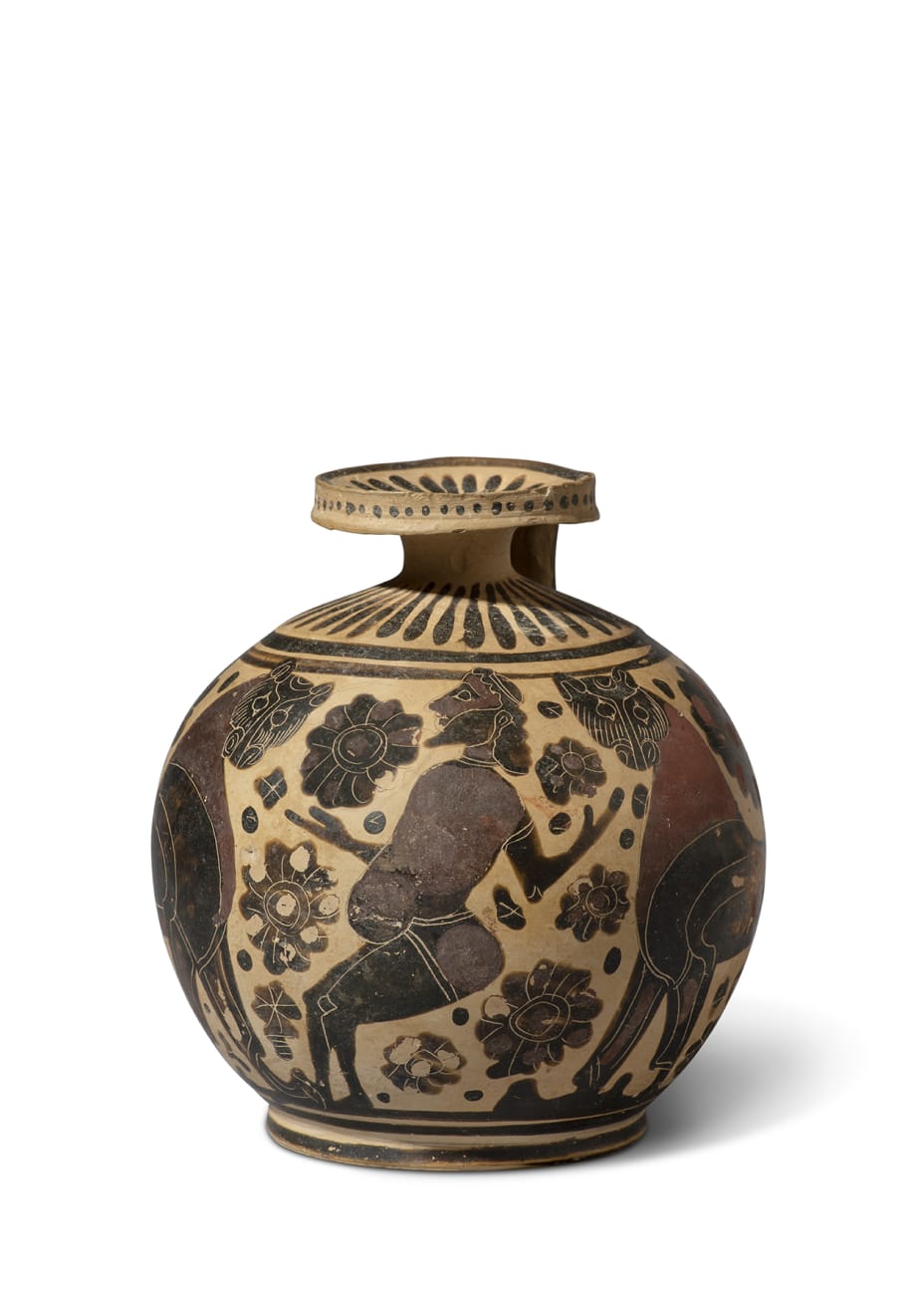Greek
Provenance
Swiss private collection, Basel, acquired between 1954 and 1965 probably from Munzen & Medaillen
Exhibitions
On loan: Basel Antikenmuseum until 2019Literature
The Painter of Berlin F 1090 takes his name from a flat-bottomed aryballos in the Staatliche Museen zu Berlin, Antikensammlung F 1090. This painter specialised in flat-bottomed aryballoi, which he usually decorated with a central motif flanked by panthers. In this instance the central motif depicted is a padded dancer or komast. Komasts were a very common theme in Corinthian vase-painting, and were often connected with ritual celebrations. The numerous representations of these figures have provoked much speculation as to their origin and their meaning. The dancers are depicted wearing clothing stuffed and padded to create the effect of swollen bellies and buttocks.
For the Painter of Berlin F 1090 see D.A. Amyx, Corinthian Vase-Painting of the Archaic Period, California, 1988, pp. 175-177. For a full discussion of the type and similar examples; J. Chamay and J-L. Maier, Céramiques Corinthiennes, Geneva, 1984, pp. 66-67. For further exploration regarding padded dancers, see A. Seeberg, 'Corinthian Komos Vases', Bulletin Supplement (University of London, Institute of Classical Studies), no. 27, 1971, pp.iii-107.



